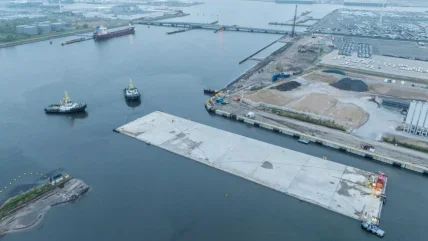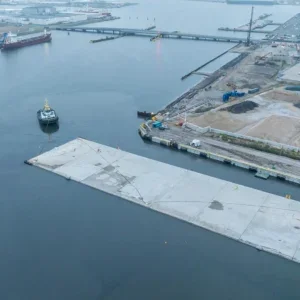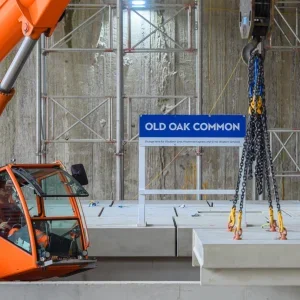
The first tunnel section of Antwerp’s new Scheldt tunnel is leaving the construction dock in Zeebrugge today.
Client Lantis and contractor TM Cotu will carry out the operation eight times this year, taking each of the tunnel’s eight elements 100km via the North Sea and the Scheldt River to the Port of Antwerp. There they will form the Scheldt Tunnel –a crucial link in Antwerp’s Oosterweel ring road.
Each element – 160m long, 42m wide and weighing 60,000 tonnes – will be accompanied by four tugboats and a pusher.
Along the route the boats will wait at Vandamme and Terneuzen in the Netherlands to sail with the high tide.
The last part of the journey follows the winding route of the Scheldt to the Doel Dock, where the elements will be kept before they are immersed. The Scheldt River has a strong current so immersion will take place during a neap tide.
Depending on conditions, Lantis and TM Cotu plan to transport at least two more tunnel sections in June, and for all to have left Zeebrugge by the end of August. The Doel Dock can hold four sections so the elements must be immersed in stages. All tunnel sections will be placed in the Scheldt by the end of the year.
Transporting the elements has taken meticulous planning. Around 72 hours before departure, crucial factors such as weather conditions, wind force, waves, currents and tides were monitored.
The nerve centre for co-ordinating the transport is located on the pusher, just behind the tunnel section. From there, the towmaster, together with the rest of the crew, oversees the entire transport.
To prepare for the journey, simulations of the conditions along the entire route were used. This trained the crew to navigate and manoeuvre in various circumstances, and taught them crisis management, communication and co-operation skills.
Flemish minister of mobility and public works Annick De Ridder said the tunnel elements’ journey was much more than a logistical achievement.
“It is a tangible start of a new boost for Flemish mobility and the economy. The Scheldt Tunnel plays an important role in a new mobility story that prepares Flanders for the future. The fact that we can achieve this with Flemish knowledge, expertise and precision makes me particularly proud… what we are achieving here is world-class,” said De Ridder.
The Scheldt Tunnel will comprise two tubes for car traffic, an escape tube and a 6m-wide bicycle tube. The new tunnel will provide an additional crossing under the Scheldt and complete the Antwerp Ring. Cyclists will be able to use the tunnel from 2028, car traffic will follow in 2030. The entire Oosterweel connection will be complete in 2033.







